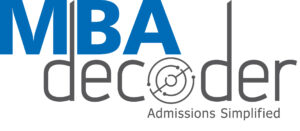An MBA from a top ranked b-school is not only a dream for thousands of working professionals, but also an investment for a lifetime. However, a world class MBA comes with its own share of caveats, the most important being cost. To give you an idea, a Chicago Booth MBA will cost you a whopping $116,969 in tuition fees and another $34000 in living costs. This adds up to more than $150,000. Needless to say you need to start planning early for your MBA. Here are some funding options that you should be aware of :
SCHOOL SCHOLARSHIPS/FINANCIAL AID
In order to get the best students in the class, every B-school provides merit and need based scholarships to deserving students, who have demonstrated exceptional academic and professional performance. Need based scholarships are provided to students who do not possess the financial resources to pay for extremely high tuition costs. In most cases you do not need to apply separately for these scholarships. The criteria for earning these are similar to those for the application- you are evaluated for academic and professional excellence and for your involvement outside your work. As we mentioned in our previous blog, the chances of getting a school scholarships are significantly higher in Round 1 & 2 than in the later rounds, since most of the funds get exhausted in these rounds. Some schools such as MIT Sloan, Columbia Business School, Fuqua School of Business, Emory Goizueta and UC Irvine also let students work as a Teaching Assistant or Graduate Assistant in the second year or after the core courses. This enables students to significantly offset costs.
PRIVATE SCHOLARSHIPS
There are several private scholarships, such as Stanford Reliance Dhirubhai Fellowship, Aga Khan Foundation, Mariwala Trust, and The Sir Ratan Tata Scholarships, which offer scholarships to deserving students. Also there are several interest free loan endowments/scholarship such as J.N. Tata Endowment and the K.C. Mahindra Education Trust.
LOANS
A bank loan is an often used method to fund your MBA. There are a number of loan options available for residents of the host country, but is fairly restrictive for non-residents.
If you are an American citizen, you are very fortunate, since you can make use of Federal Stafford Loans and Direct Plus Loans, which are readily available to students. These loans offer interest rates significantly lower than those offered by banks. If you are not an American citizen, you are less lucky and although you are eligible to get a loan from a US bank, this loan has to be co-signed by a credit worthy permanent US resident. Alternatively, you can take a loan in your home country, with the chance of getting your loan approved in India being significantly higher.
However, the interest rate for loans offered by Indian banks is significantly higher than those offered by banks in the US. Public-sector banks offer lower rates as compared to private banks. However the exact interest rate is determined on a case-to-case basis by the bank. Most public sector banks offer loans with an upper limit of INR 20 lakhs, with the exception of SBI, which offers loans up to INR 30 lakhs. For loans up to INR 4 lakhs only your parent/guardian is needed as co-borrower. For loans more than INR 4 lakhs to 7.5 lakhs, the Parent/ Guardian is listed as co-borrower and suitable collateral is placed with the bank. For loans more than INR 7.5 lakhs, Parent/ Guardian is listed as co-borrower and suitable collateral security is held by the bank.
The only disadvantage of applying for a loan in a public sector bank is that the process can be slow and cumbersome, often lasting several months and requiring a lot of documentation . This is where, private lenders (NBFC) such a CREDILA and AVANSE come in, these companies are agile in processing loans and also have a great deal of flexibility on collaterals. Also these companies do not have a limit for the maximum approved loan, which can be a game changer for the industry. However these companies offer loans at a significantly higher rate than public sector banks.
After the sub-prime lending rate crisis, most loans offered to international students were discontinued, and most of the top b-schools, like Wharton, Booth, and UCLA have since tied-up with credit unions to fill these gaps. These loans are provided to deserving international students, with the school as the co-signer.
In Canada, Singapore and Australia there are very little options for lending for a non-resident. It is advisable to apply for a loan in the home country than in the host nation. However, some of the top Canadian schools like Rotman and Schulich have tied up with Royal Bank of Canada to fund up to $45000 in tuition. As with US b-schools, these Canadian schools are the co-signers for the student loans.
COMMUNITY FUNDING
An alternative to the traditional loans are companies like Prodigy (an INSEAD alumni start-up). Prodigy works on the peer to peer lending model and provides custom loans to high ranked schools like INSEAD, London Business School and Columbia Business School.
PERSONAL FUNDS
As we mentioned at the beginning, planning plays a pivotal role in helping you finance your MBA. You will need to draw up a master plan to manage your expenses about two years before you decide to apply to the program. You can also reach out to your family and friends for support to finance your degree.
DO remember that the MBA is a long term investment, which will pay itself out several times during your career, and hopefully finances should not be the only reason prohibiting you from pursuing this life changing experience.
